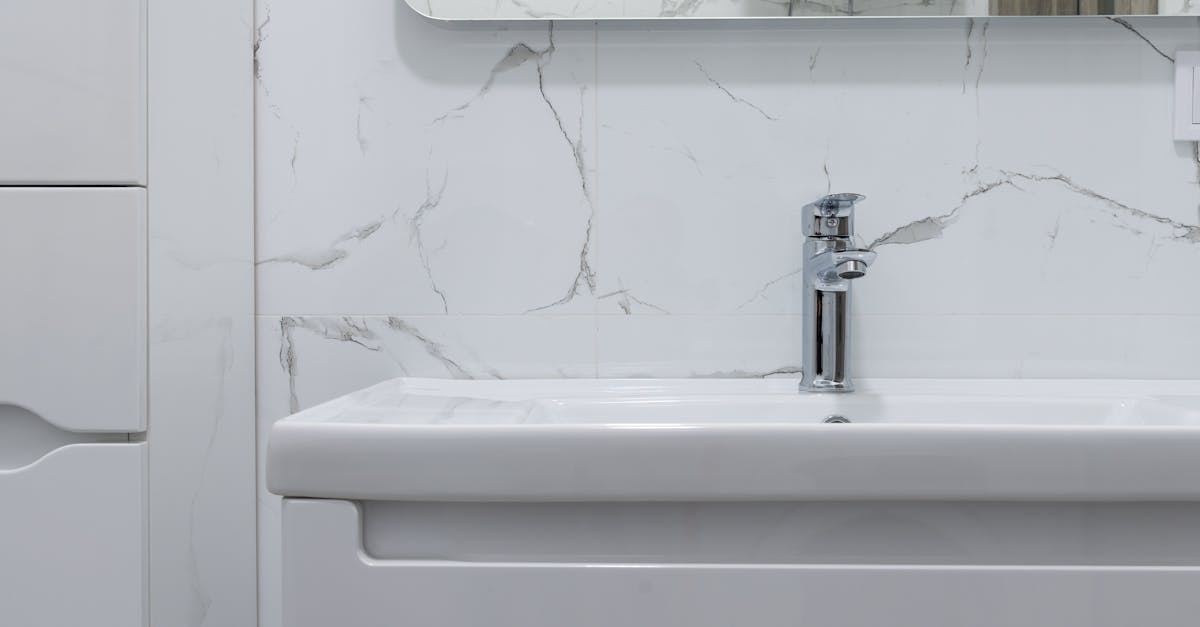
Table Of Contents
Testing the Water Temperature
To ensure your electric hot water system is working efficiently, it is essential to regularly test the water temperature. Testing the water temperature is a crucial step in maintaining the functionality of your hot water system. To do so, simply turn on a hot water faucet and let it run for a few minutes. Place a thermometer under the running water to accurately measure the temperature. Ideally, the water temperature should be between 120°F and 140°F for optimal performance.
Hot Water System Troubleshooting often involves checking the water temperature to ensure it meets your household's needs. If the water temperature is exceeding the desired range, it might indicate a problem with the thermostat or heating element of the hot water system. In contrast, if the water is not reaching the minimum temperature required, it could be a sign of a different issue within the system. Regularly testing the water temperature can help you catch any potential problems early on and address them promptly to avoid inconvenience.
Turn On the Power Supply
Turn on the power supply to your electric hot water system once you have verified all the previous steps. Locate the power switch or breaker for the water heater and turn it on to provide power to the heating elements. Ensure that the power supply is connected securely and that there are no exposed wires. Proceed with caution to avoid accidents or electric shocks during this step in the Hot Water System Troubleshooting process.
After turning on the power supply, listen for any unusual sounds coming from the water heater. If you hear any pops, crackles, or buzzing noises, immediately turn off the power supply and consult a professional for further assistance. It is essential to ensure that the electric hot water system is functioning properly and safely before proceeding to adjust the thermostat or use the hot water.
Adjusting the Thermostat
Adjusting the thermostat on your electric hot water system is a crucial step in ensuring the water temperature is set to your desired level. To begin, locate the thermostat dial on your water heater. This dial is typically found on the side of the tank near the bottom. Turn the dial to adjust the temperature setting. Be mindful to make gradual adjustments and allow time for the water temperature to stabilize before checking the new setting.
Hot Water System Troubleshooting can be easily resolved by setting the thermostat to the appropriate temperature for your household needs. It is recommended to set the thermostat to around 120 degrees Fahrenheit to prevent scalding and ensure energy efficiency. Remember that higher temperatures can lead to unnecessary energy consumption and increase the risk of burns. By adjusting the thermostat to the right temperature, you can enjoy a consistent supply of hot water while minimizing energy costs.
Set the Desired Temperature
Set the desired temperature for the electric hot water system by locating the thermostat control panel on the water heater. Adjust the temperature setting to the desired level by turning the dial or pressing the buttons according to the unit's design. Typically, the recommended temperature setting for most households is around 120 degrees Fahrenheit to balance comfort and energy efficiency. Ensure that you set the temperature according to your household's needs, taking into consideration factors such as the number of occupants and hot water usage patterns.
Hot Water System Troubleshooting requires setting the temperature in a way that prevents scalding while providing enough hot water for daily usage. Keep in mind that higher temperatures not only pose a risk of scalding but can also lead to increased energy consumption. Conversely, setting the temperature too low may not provide sufficient hot water for household needs. Strike a balance that ensures safety and efficiency by setting the desired temperature accurately on the electric hot water system.
Checking for Leaks
Checking for leaks is an important part of the hot water system troubleshooting process. To begin, inspect the water heater for any visible signs of leakage. Check the bottom of the tank, the pipes connected to the system, and any valves for moisture or water accumulation. Any leaks found should be promptly addressed to prevent further damage to the system and potential water wastage.
In addition to visual inspection, place a paper towel or tissue under the connections and valves of the water heater. Leave it in place for a few hours and check for any signs of water absorption. If the paper towel appears damp or wet, there may be a leak in that particular area. It is crucial to locate and repair any leaks as soon as possible to maintain the efficiency and effectiveness of the hot water system.
Inspect the Water Heater for Any Leaks
When dealing with a potential issue in your electric hot water system, checking for leaks is crucial to prevent further complications. Start by visually inspecting the entire water heater unit for any signs of leakage. Look closely at the connections, valves, and fittings to identify any water drips or puddles that could indicate a leak. Additionally, check the bottom of the unit for any pooling water, which could be a clear indicator of a leak. It is essential to address any leaks promptly to avoid water damage and maintain the efficiency of your hot water system.
Hot water system troubleshooting requires thorough examination to detect leaks effectively. In addition to a visual inspection, feel around the water heater for any moisture or dampness that might not be immediately visible. Consider using a flashlight to inspect darker or hidden areas for potential leaks. Remember that even small leaks can lead to significant problems over time, so it is essential to be meticulous in your evaluation. Identifying and repairing leaks promptly can save you from more extensive damage and costly repairs in the future.
FAQS
How do I know if my electric hot water system needs to be reset?
You may need to reset your electric hot water system if it is not producing hot water, the water temperature is inconsistent, or if you suspect a malfunction.
How can I test the water temperature of my electric hot water system?
To test the water temperature, simply turn on a hot water faucet and check the temperature. You can also use a thermometer to measure the temperature of the water.
What should I do if my electric hot water system is not turning on?
If your electric hot water system is not turning on, check the power supply to the unit. Make sure the circuit breaker is on and there are no issues with the electrical connections.
How do I adjust the thermostat on my electric hot water system?
To adjust the thermostat, locate the temperature dial on the water heater. Turn the dial to the desired temperature setting based on your preference.
What should I do if I notice leaks coming from my electric hot water system?
If you notice leaks coming from your electric hot water system, immediately turn off the power supply to the unit and inspect the water heater for any visible leaks. Contact a professional plumber for further assistance.





























